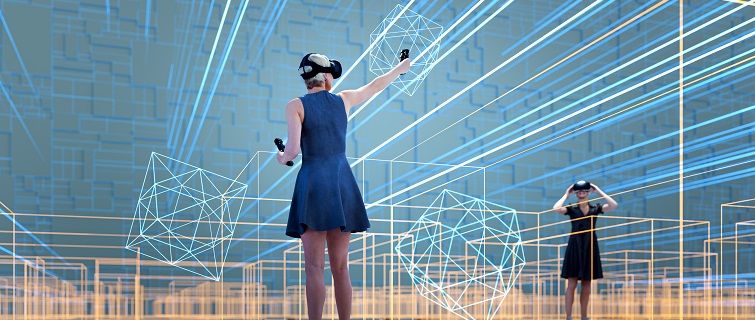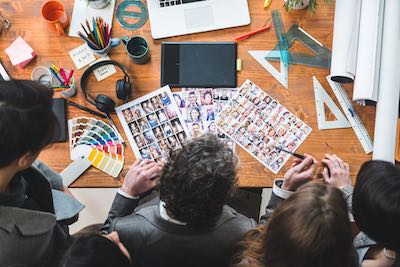
Crystal McDonald did not set out to reinvent the American bathroom. She just wanted to teach her niece a new hairstyle (a French braid) using FaceTime. So, she propped her cellphone against the back of the sink so she could see herself in the bathroom mirror, and her niece could see her. But the phone kept sliding down.
Now, one could look at this problem in two ways: the limited way (“How do I keep the cellphone out of the sink?”) or the more expansive one (“Why does this have to be so difficult?”). McDonald, an art director who was revisiting this problem as part of a Georgetown University class called User Experience (UX), chose the latter.
“There have been improvements in every room in the modern home but in the bathroom,” she mused in a description of her proposal. “We are still using the technology that has been around for centuries (gravity-fed plumbing and reflective mirrors) for grooming practices. Why not integrate technology to ease the interface of something that we spend years of our life cumulatively doing?”
A Search for Solutions
McDonald’s thoughtful answer was exactly what her instructor, Rajeev Subramanian, was looking for: not simply an idea or an invention (more about McDonald’s later) but a solution reached through careful analysis of what a person actually experiences when using a product—and then, a plan to make this interaction better.
“The purpose of this class is to come up with some unique problems or unique ideas,” says Subramanian, founder of Shift UX, a career advisory program for UX designers and researchers, who teaches the class as part of the Master’s in Design Management & Communications program at Georgetown. “Then you have to validate those through research. There’s a lot of analysis and—through continuous iterations of designs—coming up with basic prototypes—very, very simple ones—and then refining them and adding more detail until eventually, you have a final product.”
If UX is becoming a key consideration for designers today, it’s not hard to see why. Emerging from fields such as Human-Computer Interaction (HCI) and Human Factors, the UX design process is holistic and user-centered. According to the Interaction Design Foundation, “UX designers start with the Why before determining the What and then, finally, the How in order to create products that users can form meaningful relationships with.”
Looking ahead (in months, not years) Subramanian sees increasing “hyper-personalization” of products as companies amass more data on customers and use it to create highly customized products such as curated show recommendations on Netflix, personalized shopping lists on Instagram, and highly individualized experiences on platforms like Spotify.
Augmented and virtual reality products will become hugely popular, he says, as UX design rules change to accommodate the shift away from screen-centered interfaces. And Subramanian sees increasing interest in ergonomics and the psychology of consumers, with researchers examining the underlying goals, aspirations, and expectations that consumers bring to the user-product interaction. Close examination of how users experience these products will be even more critical, as will the time-honored practice of talking to customers—and listening to their needs (something an executive clearly failed to do before unveiling a product in Tom Hanks’ 1988 comedy “Big”).
A Rigorous Process
Among the products that Subramanian’s students came up with were a smart oven that streamlines the process for selecting and cooking healthy meals and a detailed app that makes something familiar to many students—the cavernous parking garage at Georgetown’s School of Continuing Studies—more efficient and user-friendly.
And McDonald’s idea? After concluding that the typical American bathroom is obsolete, she narrowed her project to designing a bathroom mirror-based interface called “Groom,” which helps parents keep their children on-task (and entertained) with time-consuming but essential routines like brushing and flossing their teeth. “The benefit of UX design is not necessarily reinventing the wheel but improving an existing process,” McDonald says.
“I want the students to understand that UX is not solely a creative discipline that flexes their design muscle,” Subramanian adds. “It is truly a methodical, scientific, and rigorous process that allows businesses to validate some of their offerings and ensures that a user actually has an enjoyable, useful, and usable experience.”
